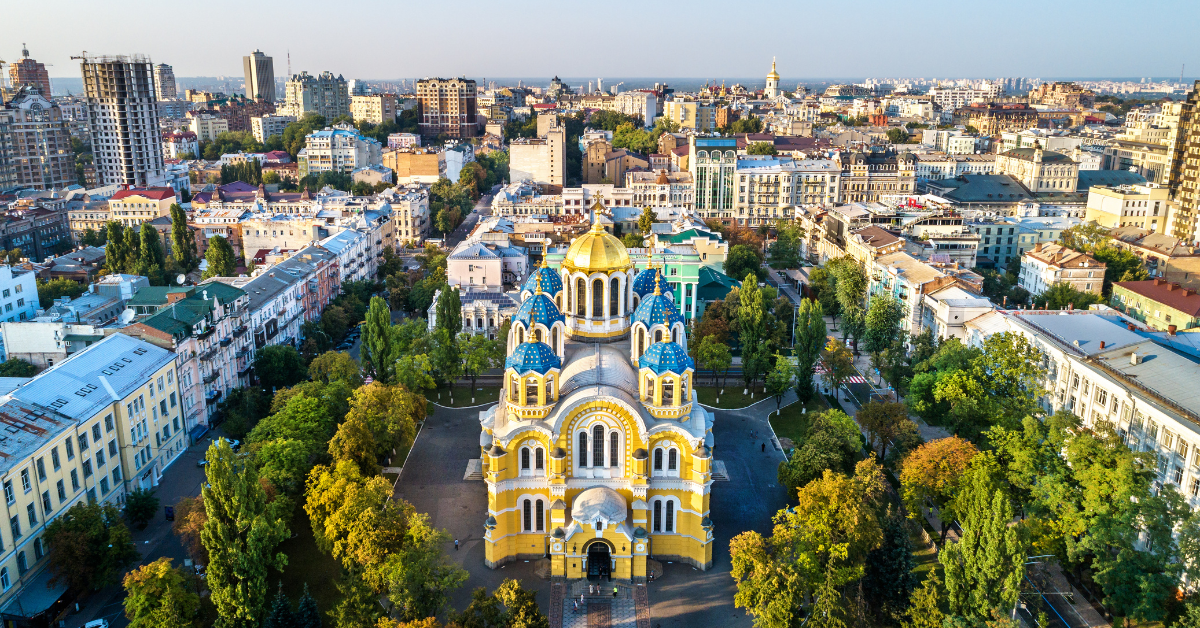Japanese country names can appear in Katakana, Kanji, or as single-character abbreviations. For Ukraine, the official Kanji form is “烏克蘭”, and the single-character abbreviation is “宇”. This article explains their origins and usage differences in a way that is easy for foreigners to understand.
The Formal Japanese Representation “烏克蘭“
In modern Japanese, Ukraine is usually written in Katakana as “ウクライナ”, but the official Kanji form is “烏克蘭”. This form is borrowed from the Chinese phonetic transliteration system.
“烏” means crow and is pronounced “U”. “克” means to overcome, pronounced “Ku”. “蘭” means orchid, pronounced “Ran”. When combined, these reproduce the sound “U-Ku-Ran”.
| Kanji | Pronunciation | Meaning | Relation to “Ukraine” |
|---|---|---|---|
| 烏 | U | Crow | Represents the “U” sound |
| 克 | Ku | To overcome | Represents the “Ku” sound |
| 蘭 | Ran | Orchid | Represents the “Ran” sound |
Key Points
- A combination of Kanji chosen for sound rather than meaning
- Many foreign words in Kanji are borrowed from Chinese transliterations
- In modern Japan, this is rarely used outside formal or historical documents
The Single-Character Abbreviation “宇“
Many country names in Kanji have single-character abbreviations. For Ukraine, the abbreviation is “宇”. This is used in international abbreviations, maps, and newspaper layouts to save space.
| Abbreviation | Usage | Example |
|---|---|---|
| 宇 | Abbreviated form | International affairs articles, statistical tables |
Important Notes
- “宇” normally appears in words like “universe” (宇宙) but is chosen here because its “U” sound matches Ukraine’s first syllable
- Other countries also have single-character abbreviations (e.g., China = 中, USA = 米)
- While not intuitive for foreigners, this is common in Japanese newspaper culture
Tips for Foreign Learners
Understanding Japanese country abbreviation rules helps make sense of such notations. Many are based on either the sound or a part of the meaning.
| Country (Katakana) | Formal Kanji | Abbreviation | Origin |
|---|---|---|---|
| Ukraine | 烏克蘭 | 宇 | From the “U” sound |
| America | 亜米利加 | 米 | From the “Me” sound |
| UK | 英吉利 | 英 | From the “Ei” sound |
| France | 仏蘭西 | 仏 | From the “Futsu” sound |
Why Kanji Forms Still Exist
Today, Katakana is the standard form for foreign words in Japanese, but Kanji forms remain due to historical influence. During the Meiji era, Japan learned Western place names and personal names through Chinese, adopting their Kanji transliterations.
Roles of Kanji forms
- For use in diplomatic or formal documents
- For space-saving in newspapers and maps
- To maintain historical accuracy in reprinted works
Modern Usage and Cautions
In modern writing, Katakana “ウクライナ” is most common. However, historical records, newspaper headlines, and diplomatic documents may use Kanji or single-character abbreviations.
| Medium | Example | Reason |
|---|---|---|
| Newspaper headline | 宇大統領来日 | Space-saving |
| Diplomatic document | 烏克蘭政府 | Formal usage |
| History book | 烏克蘭の独立 | Reproducing the original period style |
Common Pitfalls for Foreigners
- Kanji represent sounds, not meanings, so direct translation is not possible
- Single-character abbreviations are unique to Japanese newspaper style
- The same Kanji may have unrelated meanings (e.g., 蘭 = orchid)
Conclusion
In Japanese, Ukraine is most commonly written in Katakana, but its formal Kanji form is “烏克蘭”, and its single-character abbreviation is “宇”. These forms stem from historical influence and newspaper culture, offering insight into the depth of Japanese writing. While initially confusing for foreigners, knowing these rules makes them easier to understand.






